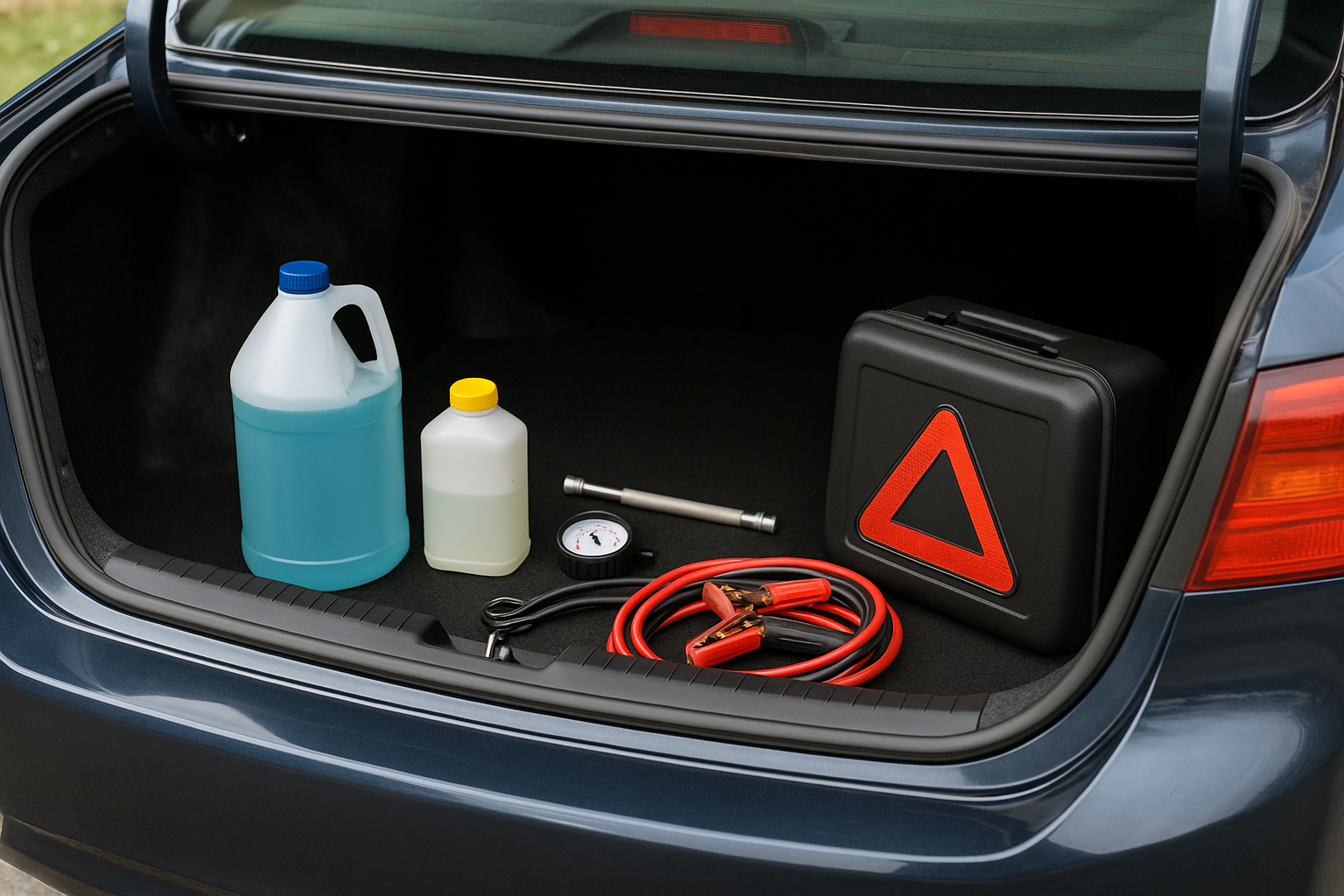Hook: Planning a cross-country adventure? A thorough road trip car checklist and smart long distance car prep ensure you spend less time stranded on the shoulder and more time enjoying the open road. Follow these steps to make your next 1,000-mile drive smooth and stress-free.
- Why pre-trip maintenance saves you time and money
- Easy DIY checks and when to call a pro
- Essential packing tips for car care on the go
Why Proper Pre-Trip Prep Matters
Driving 1,000 miles stretches every component of your vehicle—from engine cooling to tire wear—well beyond daily commute demands. Skipping key inspections can lead to breakdowns, overheating, or unexpected repairs miles from the nearest service station. A comprehensive long distance car prep routine minimizes risk, keeps your fuel economy on track, and gives you peace of mind to focus on the scenery, not the service manual.
Step-by-Step Road Trip Car Checklist
1. Inspect Tires & Wheels
Check tire pressure (including your spare) and adjust to the manufacturer’s recommended PSI. Examine treads for uneven wear or embedded debris, and rotate or replace if tread depth is below 4/32″. Don’t forget to inspect your spare and the jack kit—your road trip car checklist isn’t complete without a usable backup.
2. Verify Fluid Levels
Top off engine oil, coolant/antifreeze, brake fluid, power steering fluid, and windshield washer fluid. If oil change is due within the next 1,000 miles, perform it now to keep the engine running clean and cool. For harsh climates, choose coolant with the right freeze/boil-over protection.
3. Test Battery & Charging System
Have your battery’s voltage and cranking amps tested—especially if it’s over three years old. Clean corrosion off the terminals, tighten connections, and inspect cables for cracks. A fresh battery or connector repair can prevent a no-start scenario at dawn.
4. Examine Brakes & Suspension
Spin each wheel to listen for grinding or rubbing noises. Check brake pad thickness (minimum 3 mm) and look for fluid leaks at calipers. Verify shock and strut mounts for leaks or damage—long-distance comfort and handling depend on a healthy suspension.
5. Replace Cabin & Engine Air Filters
A clean air filter keeps fuel economy optimized and cabin air fresh. Swap your engine air filter to maintain proper fuel/air ratio, and install a new cabin air filter to reduce pollen or dust on long hauls.
6. Inspect Lights & Wipers
Test headlights (high/low beam), brake lights, turn signals, and hazard lights. Replace any burned-out bulbs. Fit fresh wiper blades and fill washer fluid—rain and highway grime are inevitable on a 1,000-mile journey.
7. Pack an Emergency Roadside Kit
Your kit should include jumper cables, a tire pressure gauge, portable air compressor, basic tool set, flashlight with extra batteries, first-aid supplies, and reflective triangles. Add bottled water, non-perishable snacks, and a blanket for unexpected delays.
Pro Tips & Advanced Tricks
- Use a digital tire inflator with built-in gauge to quickly top off at gas stops.
- Apply anti-seize lubricant to battery terminals and lug nuts before departure.
- Carry a small funnel and extra engine oil/coolant sealed in travel-safe containers.
- Map service stations and parts stores along your route using your GPS or a road-trip app.
Common Pitfalls to Avoid
- Overlooking belt condition: A worn serpentine belt can snap under heavy load. Inspect for cracks or glazing.
- Ignoring warning lights: Don’t clear codes without diagnosing; check-engine lights often signal issues that worsen with mileage.
- Packing too much weight: Overloaded cargo stresses brakes, suspension, and tires. Distribute gear evenly and stay within your load limit.
FAQs
- Q1: How far in advance should I prep my car?
- A1: Perform major checks (fluids, filters, battery) 1–2 weeks before departure, then do a quick walk-around the day before your trip.
- Q2: Can I change brake pads myself before a road trip?
- A2: If you have the right tools and experience, yes—but for safety-critical parts like brakes, consider professional service for peace of mind.
- Q3: What’s the ideal tire pressure for a long drive?
- A3: Use the manufacturer’s placard rating for a fully loaded vehicle. Slightly higher PSI (2–3 PSI) can improve fuel economy and reduce heat buildup.
Conclusion & Next Steps
With this road trip car checklist and thorough long distance car prep, you’re set to tackle 1,000 miles confidently. Schedule routine stops every 200–300 miles to recheck your tires and fluid levels. Now pack your bags, queue your playlist, and hit the road—adventure awaits!
